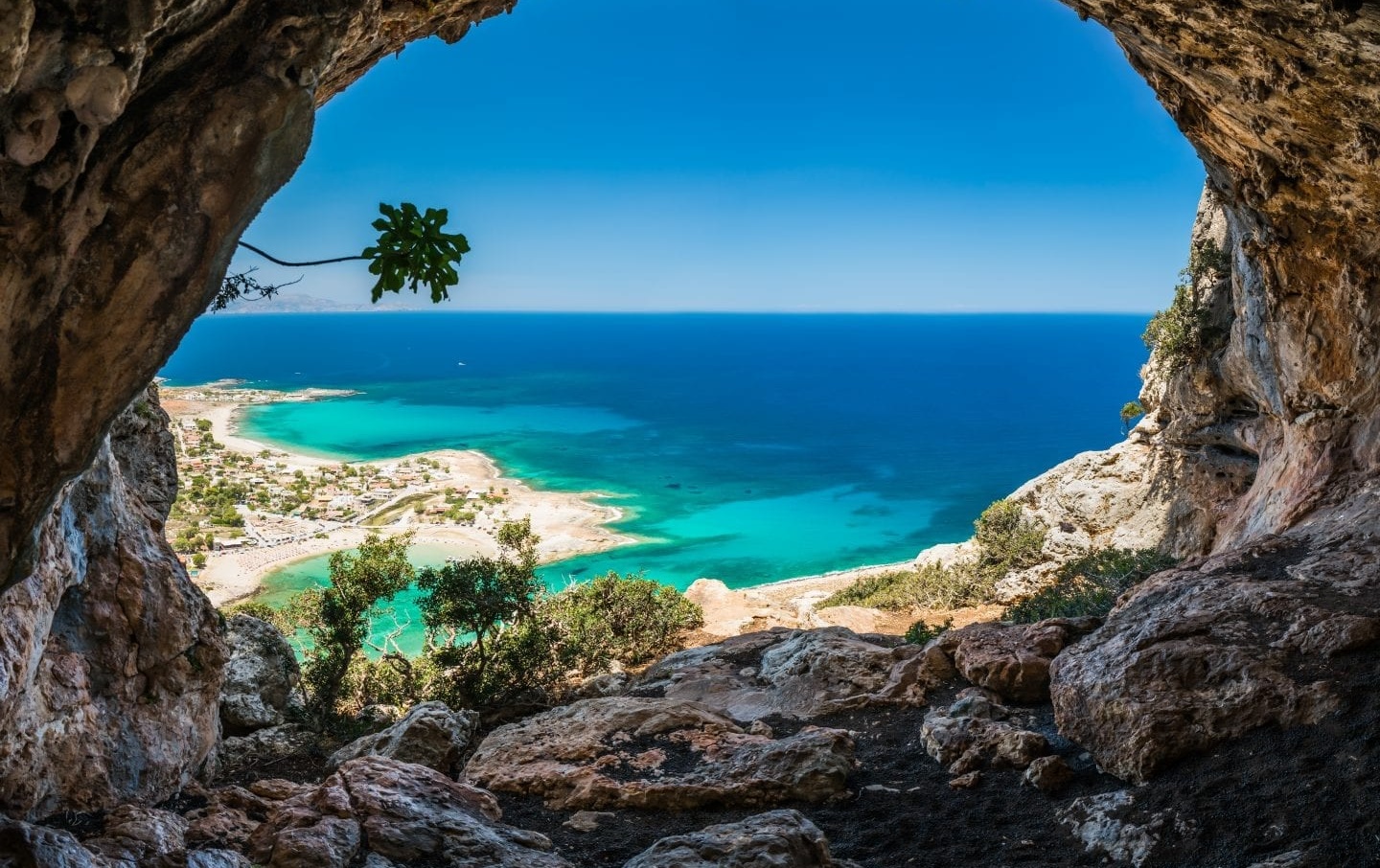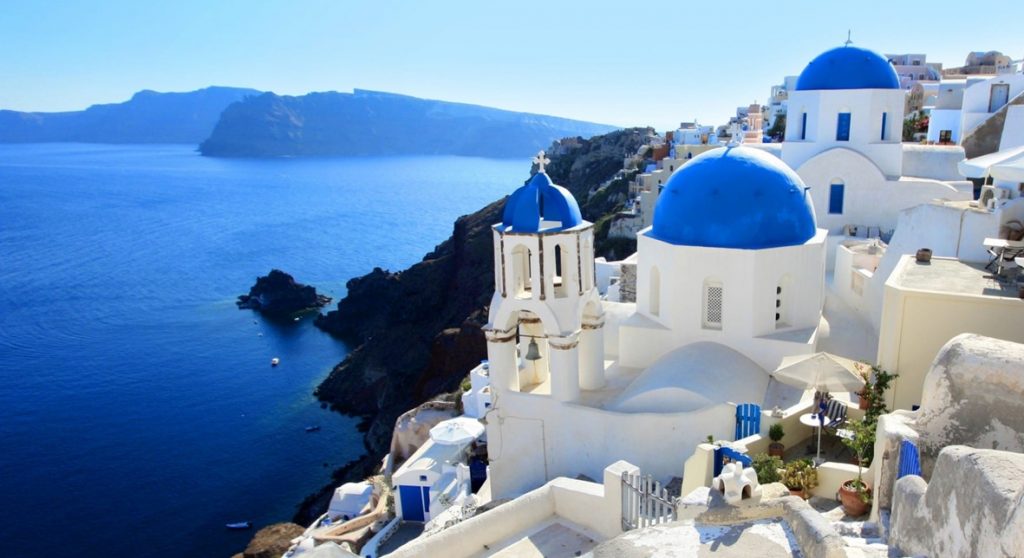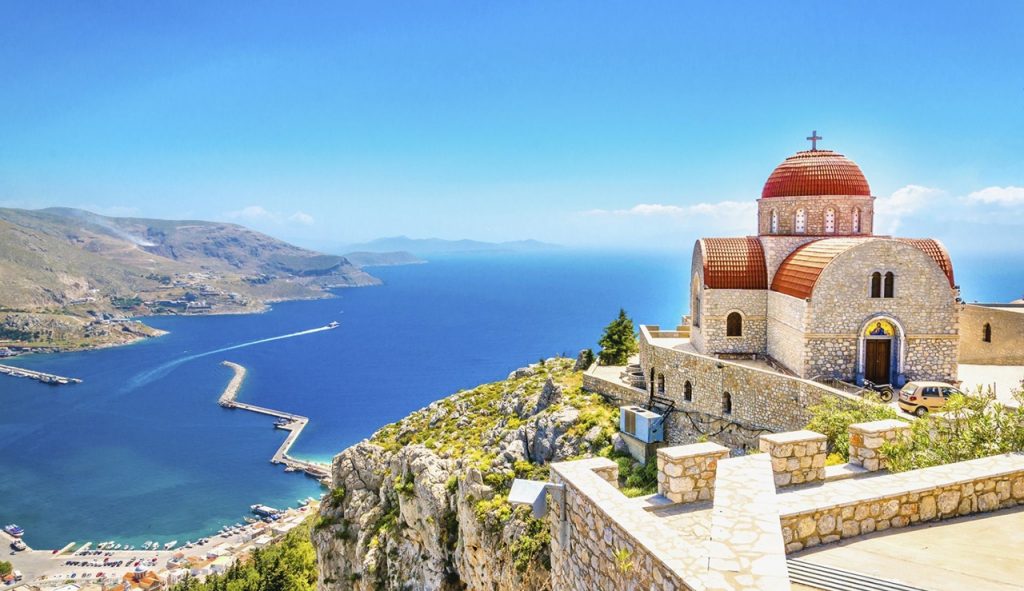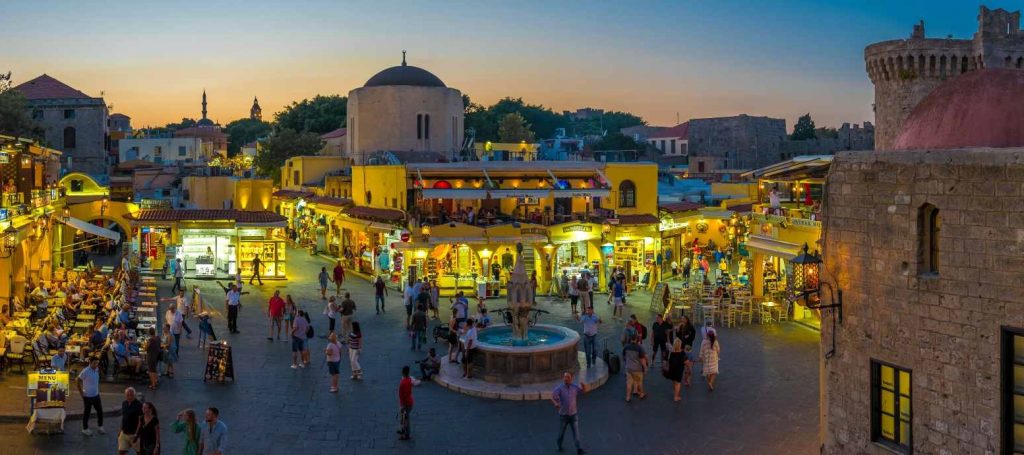Dream beaches and sun guarantee / Greek islands are booming

There are thousands of magical islands in Greece. But which island suits which holiday type? Our little island guide presents six summer trend destinations in the Aegean – for every holiday taste.
After two hard Corona years, the beach and sun seem to be particularly attractive to German holidaymakers this summer. Greece’s islands in particular are enjoying great popularity and are booming like never before.
Click for Greek Islands tours with the best price guarantee
The reasons are obvious: reliably warm bathing temperatures, the charm of many different islands, the legendary Greek hospitality – but also the travel prices, which have been rising steadily for weeks. At the moment nobody knows how high these will climb due to the rising fuel costs since the outbreak of the Ukraine war. We present the most beautiful and popular islands of Greece.
Crete: all-rounder with gorges, palm trees and palaces
It has everything, it can do everything – it is simply the greatest: Crete is the star among the Greek islands, because at a length of 260 kilometers and a width of 60 kilometers a whole new world opens up to holidaymakers. With mountains more than 2000 meters high. With more than 400 gorges including the spectacular Samaria Gorge, one of the longest gorges in Europe. With pretty port cities like Retyhmnon or Chania. With the more than 3500 year old palace of Knossos, the most famous archaeological site in Crete. With monasteries, churches and chapels and the stalactite cave in the Lassíthi plateau, where the father of the gods Zeus is said to have been raised by goats.
With white villages in the hinterland, with their traditional
Architecture and cozy taverns enchant. And of course with beaches that range from rocky bays on the cliffs, white sandy beaches with palm trees like in Vai and tiny pebble bays to offshore islets. Conclusion: The nature on Crete is so diverse that hikers, water sports enthusiasts and beach mermaids as well as culture or family vacationers will find paradisiacal conditions.
Santorini: An island of longing for romantics and volcano fans

Black lava beaches, white-washed houses that cling to rocks rising 300 meters vertically out of the sea, churches with blue domes and impressive sunsets: the Cyclades island of Santorini is considered the most beautiful island in the country because of its extraordinary appearance and is a dream destination for romantics par excellence.
The magical attraction that the volcanic island has is not only based on the spectacular landscape, but also on the history of its origin. For some it is the remnant of the mythical kingdom of Atlantis, for others it was born more than 3600 years ago through a gigantic volcanic eruption.
In fact, white cube-shaped houses and many stylish boutique hotels perch like eagle’s nests on the cliffs and offer unforgettable views of the sparkling indigo blue of the Aegean Sea. Steep stairs lead from the black lava beaches up to the places on the rim of the crater, where you can watch romantic sunsets. Conclusion: A particularly large number of lovers and honeymooners are drawn to the island, which is only 76 square kilometers in size.
Mykonos: The most liberal party island in the world
Roaring nights and openness for LGBT, that’s what the Cyclades island is internationally known for. This began in the early 1960s when nudists discovered Paradise Beach in the south of the island and turned it into a nudist retreat. In the meantime, the party scene has firmly established itself there. Before the Corona times, the wild parties usually started in the afternoon and people danced and celebrated until sunrise.
A cosmopolitan, young crowd, including the gay and lesbian holiday scene, meets on the island, 160 kilometers east of Athens. Those who need a little break from nightlife can relax in the cozy cafes of the island’s capital or relax on Elia Beach, ten kilometers to the south. Conclusion: If you want to party until you drop, Mykonos is the place for you.
Naxos: Hiking on the greenest island in the Aegean
Viewed from the coast, the Cycladic island of Naxos looks just as barren as its neighbors. But far from it. Springs are bubbling in their midst, lush flower meadows sway in the wind and large quantities of vegetables, potatoes, figs and almonds grow. A chain of mountains runs through the island from north to south, rising to 1000 meters with the highest mountain Zas. Hikers love this area, which is dotted with charming hilltop villages with unexpected sights along mule tracks.
For example, the ruins of the ancient Temple of Demeter near Ano Sangri, built from local marble around 530 BC. 20 kilometers of beautiful beaches with turquoise water stretch south from the island’s capital. The further south, the quieter it gets between sand dunes and secluded mini bays. Conclusion: The multifaceted landscape attracts hikers and beach holidaymakers who also like to go out, because people like to party in the main town of Chora.
Kos: Beach paradises, bike paths and ancient sanctuaries

20 kilometers of coast and miles of sandy beaches: The island of Kos is one of the most popular Greek islands and is considered a bathing paradise with blue flag beaches. Families feel at home on the north coast with its gently sloping dream beaches. Wind and kite surfers will find perfect conditions in the east of the 45 km long and eleven km wide island. And cyclists are happy about a well-developed network of cycle paths – and many bike and e-bike rental stations.
Culture can also be admired on the Dodecanese island: four kilometers southwest of Kos town is the Asklepieion, a sanctuary from the 4th century BC, on a 100 meter high hill. The sick were treated and doctors were trained in the columned halls with terraces and staircases made of marble, which were dedicated to Asklepios, the god of healing. Conclusion: Everyone loves Kos – especially families, windsurfers and kiters as well as bathers who also like to cycle through the flat landscape.
Rhodes: Island of the Gods with a medieval town and dream beaches

Just lying on the 32 beaches and worshiping the sun? You can’t do that on Rhodes. Because the 78-kilometer-long Dodecanese island has several cultural highlights that even inspire those who don’t like sightseeing. The medieval old town of the island’s capital, for example, which is dominated by a huge grand master’s palace and surrounded by a five-kilometer city wall with mighty gates. Within this Unesco World Heritage Site, the pulsating life in the narrow streets and historic squares inspires.
The special thing about Rhodes Town is that there is also a beautiful and well-kept beach – right in the city center. Otherwise, the popular sand and pebble beaches line the east coast down to the south, where one of the best strong wind areas for windsurfers and kitesurfers lies in the sand dunes of Prasonisi. Towards the west coast it becomes more original, narrow tar roads and many hairpin bends lead via small mountain villages to secluded beaches in sheltered rocky bays. Conclusion: More than 3000 hours of sunshine a year and beaches of all kinds make Rhodes the perfect destination for bathers and windsurfers, who also like to explore the island and its sights by rental car.




